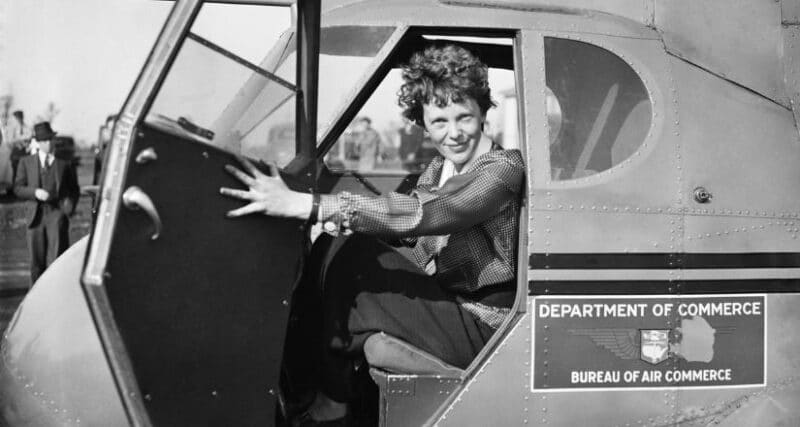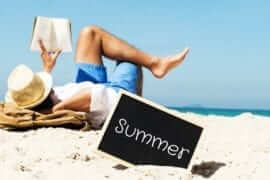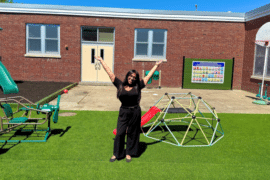10 Classroom Activities to Celebrate Women in Science this Women’s History Month
It was first said by our then president Jimmy Carter:
“From the first settlers who came to our shores, from the first American Indian families who befriended them, men and women have worked together to build this nation. Too often the women were unsung and sometimes their contributions went unnoticed. But the achievements, leadership, courage, strength and love of the women who built America was as vital as that of the men whose names we know so well. As Dr. Gerda Lerner has noted, “Women’s History is Women’s Right.” – It is an essential and indispensable heritage from which we can draw pride, comfort, courage, and long-range vision….I ask my fellow Americans to recognize this heritage with appropriate activities during National Women’s History Week, March 2-8, 1980.”
And this was just the beginning. Word spread rapidly across the nation as state departments of education moved to encourage National Women’s History Week celebrations. Within a few years, thousands of schools and communities were celebrating National Women’s History Week. Finally, petitioned by the National Women’s History Project in 1987, Congress moved to designate the month of March as “Women’s History Month.” Since then, each president has annually proclaimed March as Women’s History Month. As a scientist in education, I am charged with highlighting women in my field. So- without further ado, I present my “Wonderful Women in Science” activity list.
- Make Constellations with Sally Ride, the first woman in space. After sharing her story with your class, have your students research constellations visible in our night sky during this season. Have each student name and draw their chosen constellation a piece of paper (pre-measure this to match the size of a toilet paper roll). Attach the paper covering one end of an empty toilet paper roll and poke holes in the paper that represent where the stars of the constellation are. Turn the lights out and close the blinds to darken the room. Now have students shine a flashlight through the open end and point it at the ceiling! Welcome to your very own indoor classroom planetarium! If you really want to challenge your students, have them order their constellations the way they really appear in the sky!
Materials: paper, toilet paper rolls, flashlights, scissors, pens/pencils
- Flower Pots with Rachel Carson: Carson wrote a book called Silent Spring (high school level reading). Most of our classrooms are not ready to read this 1962 book, but they are ready to hear her message. Her book was the first to call to attention the use of pesticides and the damage it was causing in our environment. It sparked many movements to clean up our environment, and to change our methods to bring about a cleaner world. After sharing her story with your class, decorate small flower pots. Teach the students the basic needs of plants to grow and survive. Have students plant something that is native to your area. Set them on the windowsill and water them as needed.
Materials: mini flower pots, local seeds, paints, paint brushes
- Extract DNA with Rosalind Franklin: Many credit Watson and Crick (both men) with the discovery of the shape and structure of DNA. However, their model of DNA was based on chemist Rosalind’s X-rays of the double helix structure of DNA. Share her story with the class, and then complete a simple experiment to extract DNA from strawberries! If DNA extraction seems daunting for you, try making a model of DNA structure using candy.
Extraction Materials: Ziploc bags, strawberries, alcohol, cheesecloth, water, salt, soap
Model Materials: multi colored dots or gumdrops, licorice, toothpicks, paper towels
- Lunar Landers with Margaret Hamilton: Margaret was a programmer and mathematician who was credited for saving the lunar landing by developing the software needed to land on the moon. Share her story with your class and then get ready to design using STEM. Lunar Landers are a lot of fun in any classroom, across all levels. Students will get a chance to protect their own marshmallow astronauts as they “touch down” on the moon- or a chosen location in your classroom.
Materials: straws, cups, marshmallows, marshmallows, index cards, tape, rubber bands
- Airplanes with Amelia Earhart: Many of your students will already know that Amelia Earhart was the first female aviator to fly solo across the Atlantic Ocean in 1932. She flew from Newfoundland to Ireland in a record 14 hours and 56 minutes, winning her fame. Her story ends in a tragic mystery, as during a flight across the globe, she disappeared while over the Pacific in 1937. Her plane was never seen again, and she was officially declared lost at sea. Share her story with your students and then spend some time designing paper airplanes. Test to see if drag affects the distance an airplane will fly in this paper plane lab.
Materials: paper, tape, box fan (optional)
- Bridges with Emily Roebling: Emily Roebling was the first person to ever cross the Brooklyn Bridge on opening day in 1883. This position was well earned. Her husband was commissioned the chief engineer during construction of the Brooklyn Bridge, but he became ill and died while it was still under construction. Emily guided the completion of the Brooklyn Bridge, making her the first female field engineer. Share her story with your students, celebrate Emily Roebling and test your engineering skills by constructing a bridge using the engineering design process and explore compression (pushing) and tension (pulling) force. Try this paper bridge, or find another version that you prefer.
Materials: books, paper, scissors, tape, pennies
- Class Olympics with Princess Kyniska: “Kings of Sparta were my fathers and brothers. I, Kyniska, victorious at the chariot race with her swift-footed horses, erected this statue. I claim that I am the only woman in all Greece who won this crown.” – Princess Kyniska.
These were the words that Kyniska had inscribed under her two statues that she had made and placed around the city. After all, she WAS the only woman to win the Olympics, because in ancient Greece, women were not allowed to participate. She trained and entered her team at the Olympics in the four-horse chariot race and hired male charioteers to drive the horses for her. But they were still her horses, who performed under her training, making HER the winner of the race. Share her story with your class, and then have a class Olympics to honor the Spartan Princess Kyniska. You can make your Olympic games whatever fits your curriculum, time, and energy level. Have fun!
- Solar ovens with Maria Telkes: Renewable resources are hot topics in science classrooms today. Solar panels are even secured to many homes and schools. Maria Telkes invented the first system to heat a home using solar power! Introduce your students to the sun and the energy it can produce- then give them an opportunity to try harnessing that power. Design a solar oven and cook s’mores- or rice crispies treats, or some other treat that makes you and your students happy. NASA has you covered for this easy classroom activity. Yummy!
Materials: cardboard box, tin foil, plastic wrap, glue, tape, snack of choice, ruler, stick
- PBS The Makers: This resource isn’t focusing on one amazing woman, but instead connects you with many. PBS´s The Makers website offers hundreds of short documentaries about powerful and intelligent modern women in science, business, politics, and art who are changing the world for the better. Take your pick! This is an easy way to introduce your class to an amazing woman every single day in March and beyond.
- Women’s history scavenger hunt: This is another great resource that will introduce your students to many women throughout history who contributed to science, politics, math, and the arts. It offers a worksheet and resources for the students to use. This is a great one period, student led activity for older students. Print it out and get ready to watch your students learn.
– Jessica Cicalese-Kurtz





